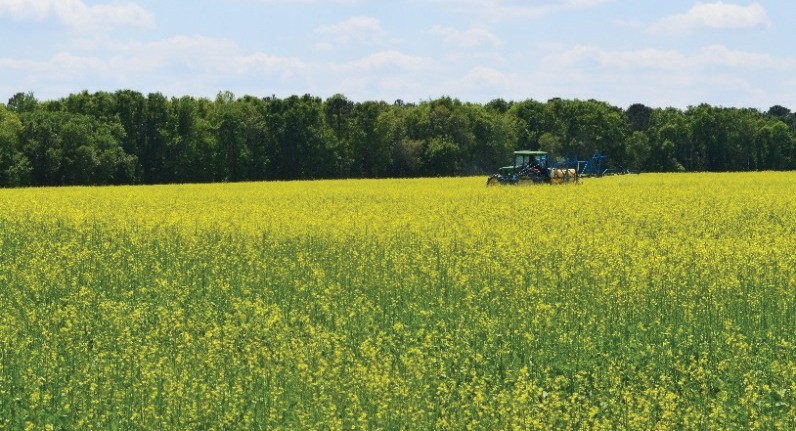Abstract
Brassica carinata is a non-food industrial oilseed crop that can be grown in the winter in the southeast US without impacting food, feed, or fiber crops. Carinata is a low carbon advanced renewable fuel feedstock and a good source of animal protein. Carinata research in the SE US through a public-private partnership has developed a comprehensive body of knowledge regarding carinata agronomics, life cycle analysis, best management practices and economics. This article aims to help growers and others interested in carinata to understand its biology, agronomy, and production aspects.
References
Baldwin, J. M., S. V. Paula-Moraes, M. J. Mulvaney, and R. L. Meagher. 2020. “Occurrence of Arthropod Pests Associated with Brassica carinata and Impact of Defoliation on Yield.” Global Change Biology Bioenergy, 13: 570–581. https://doi.org/10.1111/gcbb.12801.
George, S., R. Seepaul, D. Geller, P. Dwivedi, N. DiLorenzo, R. Altman, E. Coppola, et al. 2021. “A Regional Interdisciplinary Partnership Focusing on the Development of a Carinata- Centered Bioeconomy.” Global Change Biology Bioenergy, 13: 1018–1029. https://doi.org/10.1111/gcbb.12828.
Iboyi, J. E., M. J. Mulvaney, K. S. Balkcom, R. Seepaul, M. Bashyal, D. Perondi, R. G. Leon, et al. 2021. “Tillage System and Seeding Rate Effects on the Performance of Brassica carinata.” Global Change BiologyBioenergy, 13 (4): 600–617. https://doi.org/10.1111/gcbb.12809.
Mulvaney, M. J., R. G. Leon, R. Seepaul, D. L. Wright, D. L., and T. L. Hoffman. 2019. “Brassica carinata Seeding Rate and Row Spacing Effects on Morphology, Yield, and Oil.” Agronomy Journal, 111: 528–535. https://doi.org/10.2134/agronj2018.05.0316.
Protection to Environment. 2016. 40 C.F.R. 180.1. Accessed February 22, 2016. http://ow.ly/YC66T.
Silveira, M. L. 2014. “Soil and Plant Tissue Testing: SL412/SS625, 4/2020.” EDIS 2020 (2). https://edis.ifas.ufl.edu/ss625.
SPARC. Carinata Scouting Guide. https://sparc-cap.org/wp-content/uploads/2020/02/scouting_v2_web.pdf.
Wright, D. L. 2010. “Production of Biofuel Crops in Florida: Canola, SS AG296, 11/2010.” EDIS 2010 (6). Accessed September 9, 2014. http://ufdcimages.uflib.ufl.edu/IR/00/00/37/32/00001/AG30100.pdf

